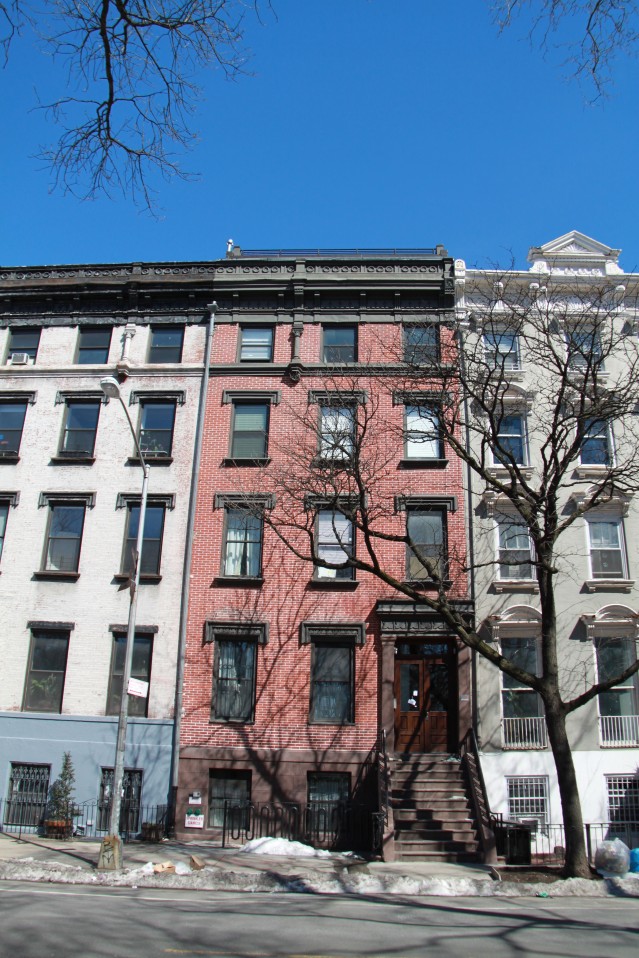315 East 10th Street | Block : 404 | Lot #48
Description & Building Alterations
This four-story building, constructed by builder James C. Whitlock in 1847 by owner Robert Hogan. No. 315 was constructed as one of a pair of rowhouses at No. 313 to 315 East 10th Street.
Originally designed in the Greek Revival style, it was later altered in Gothic Revival style in 1892 designed by Franklin Baylies. The alteration included new window lintels and sills and a new cornice. The building’s occupant at the time was St. Brigid’s Academy. The facade features a cast iron stoop railing in addition to hooded galvanized-iron window lintels and projecting sills, and a bracketed cornice with a parapet decorated with quatrefoils. Some alterations include the shortening of parlor floor windows, installation of a stoop knee wall, and reconfiguration of basement window openings. In 2012, a permit was filed to add an additional floor to the top of the building. Only a small portion of the addition is visible from the street.
No. 315 East 10th Street has long been occupied by various Russian and Ukrainian cultural organizations.
More +Close -

In 1921, the school dormitory was converted into a membership club house for the Russian Erudition Society “Nauka”. Inside there was a dining room, sitting room, and store rooms. In 1930, it was the headquarters of the Russian Consolidated Mutual Aid Society and its affiliate school. Various newspaper articles about the organization paint an evocative picture of the internal ideological struggles that were taking place inside of it at the time. For example, a 1930 New York Times article details a meeting at this building during which five Communist Delegates and two Communist newspaper representatives were expelled from the organization for being too Pro-Soviet. Thus, the tension in this organization between pro- and anti-Soviet Russians is certainly a microcosmic representation of the greater cultural strains that American Communists were facing at the time. Another article, published in 1934, details the curriculum and mission of the Russian School, which was then celebrating its 15 year anniversary. The school’s curriculum reflects a desire on the part of the educators to teach their 58 students about where they come from, as “Russian literary classics, geography and history are required courses in the curriculum,” and, “instruction is given in native music and Russian folk-dancing.” By 1967, the building had been taken over by the Ukrainian American Youth Association, a 500-member organization, and the neighborhood was certainly changing around it. A New York Times article from June of the same year discusses friction between the older Slavic population of the East Village near Tompkins Square Park and the ‘hippies’ that many felt were destroying the cultural fabric of the neighborhood.
Block : 404 / Lot : 048 / Building Date : c. 1847-48; 1892 (alteration) / Original Owner : Robert Hogan / Original Use : Residential / Original Architect : James C. Whitlock (builder); Franklin Baylies (1892)


Do you know this building? Please share your own stories or photos of this building here!